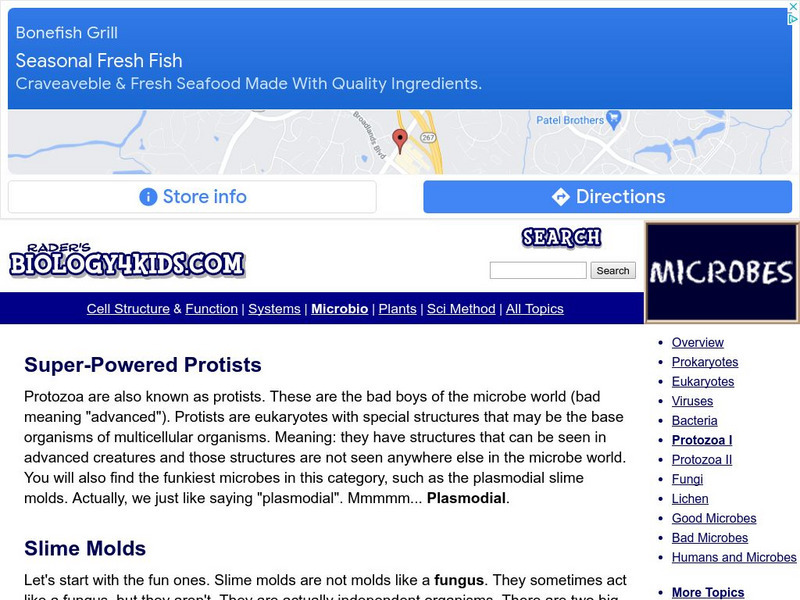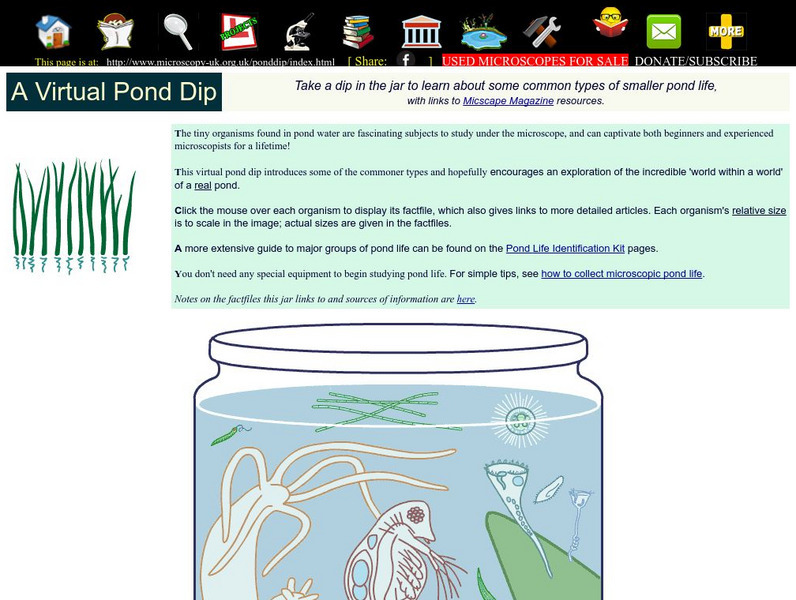Hi, what do you want to do?
Curated OER
Science: Conditions for Slime Mold Survival
Students perform experiments to determine the nutritional needs and physical space requirements for slime mold to survive. After formulating hypotheses, they seal the petri dishes and set up the experiment along with two controls. ...
Curated OER
Collaboration via Slime Mold
Students combine the skills and concepts that they have developed to ask a simple question which can be answered on a Petri plate. They ask questions and design experiments for verification through collaboration with their classmates.
Curated OER
Make Slime
Learners make slime. In this chemical reaction lesson, student use Borax to make a gel like solution. Students add all ingredients listed, add food coloring, and mix well. Learners see first hand how chemicals react together and...
Curated OER
Protists
In this protists learning exercise, students compare and contrast the different types of funguslike protists: slime molds, water molds, and downy mildews. This learning exercise has 1 short answer and 7 fill in the blank questions.
Curated OER
Cool Activities: Make Slime
Students analyze chemistry by conducting an in-class experiment. In this slime instructional activity, students discuss what slime is and what form of matter it qualifies as. Students utilize borax, glue, water, cups, food coloring and...
Curated OER
Algae: An Overview
The main characteristics and definitive features of red, green, brown, and 4 other algea are listed along with great photos and examples. The details involved with reproduction styles, and information about traits of each Phyla are...
Curated OER
Protists
In this protists worksheet, students will read about the different kinds of protists including protozoans, algae, and molds. Students will then complete 2 short answer questions and 1 true or false question.
Curated OER
The Nature and Science of Technology
Fifth graders practice using the scientific method by observing and creating mold. In this bacteria lesson, 5th graders experiment creating their own mold and fungus using petri dishes and oatmeal. Students create an...
Curated OER
Protists
In this protists worksheet, students will use idea maps about plantlike protist and funguslike protist characteristics to complete 4 short answer questions.
Curated OER
Discovering the Forgotten Kingdom Protista
Protists, like algae and mold, are sometimes overlooked for classroom study, but they are astonishing in their diversity and importance.
Biology Junction
Protists: The World of Protists
More than 200,000 species of protists exist, living on land and in water around the planet. Scholars view the diversity of protists in an interesting presentation. It divides protists into three groups: animal-like protists, plant-like...
Curated OER
Protists
With this collection of slides, future biologists get to view photographs of protozoans from different phyla. Interspersed with the photos are bullet-style notes listing characteristics of each group. Unfortunately, most of the pictures...
Curated OER
BIO205-CH1- Intro Word Search
In this word search activity, students locate words related to biology. The word list includes protists, viruses, plants, spiral, and biotechnology.
University of California
Ucmp: Introduction to Slime Molds
This University of California Berkeley site offers a definition of slime molds, structure, and life cycle.
Science Buddies
Science Buddies: Smarter Than Your Average Slime: Maze Solving by an Amoeboid
In this science fair project, grow the acellular slime mold Physarum polycephalum and test its ability to find the shortest path through a maze.
Wikimedia
Wikipedia: Slime Mold
Wikipedia provides several paragraphs of information on slime molds, members of the Protista kingdom. Includes image.
National Health Museum
Access Excellence: Slime Mold Biology Activity
This site offers instructions for a biology lab involving slime mold. Includes steps for the 5 day procedure and explains how students should evaluate their observations.
Science Buddies
Science Buddies: Slimey Likes It! Studying Chemotaxis in Physarum Polycephalum
In this biology science fair project, test various amounts of glucose to see which ones attract and which repel (chemotaxis) growing Physarum polycephalum slime mold.
CK-12 Foundation
Ck 12: Life Science: Fungus Like Protists
[Free Registration/Login may be required to access all resource tools.] Fungus-like protists share many features with fungi. Like fungi, they are heterotrophs, meaning they must obtain food outside themselves. They also have cell walls...
CK-12 Foundation
Ck 12: Life Science: 6.5 Mold
Learn about several different types of fungus-like protists.
Biology 4 kids
Biology4 Kids: Super Powered Protists
Meet the "big guys" on campus. Protists are the more advanced types of eukaryotes that are unique such as amoeba and slime molds.
CK-12 Foundation
Ck 12: Biology: Molds
[Free Registration/Login may be required to access all resource tools.] Describes different types of fungus-like protists.
Microscopy UK
Microscopy Uk: A Virtual Pond Dip
In this site, you will be introduced to some of the more common organisms found in a pond. Contains a thorough guide to small and microscopic pond life with links to other descriptive sources.
McGraw Hill
Glencoe Biology: Funguslike Protists: Self Check Quiz
Answer these five multiple-choice questions about fungus-like protists. After answers are submitted, students can review their mistakes.



























